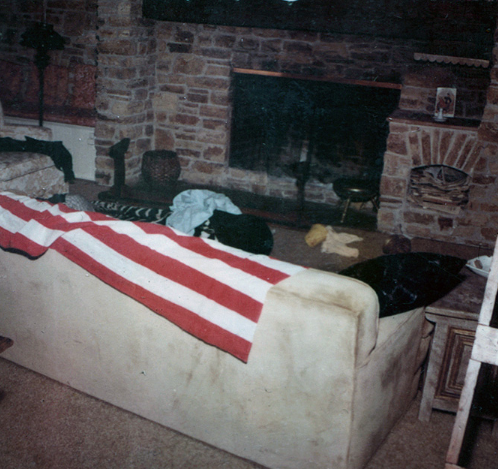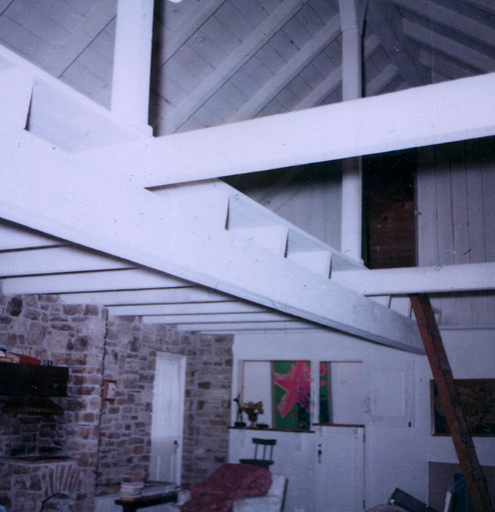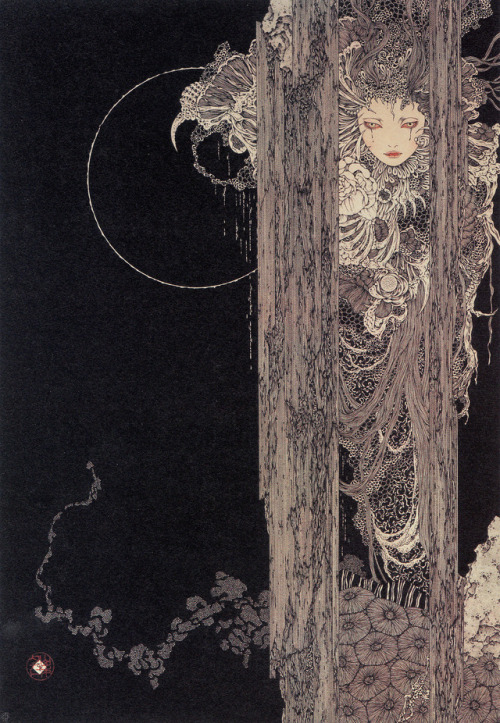The Murder Of Dorothy Jane Scott

The Murder of Dorothy Jane Scott
The kidnapping and murder
32-year-old Dorothy Jane Scott and her family became extremely worried when Dorothy started receiving anonymous phone calls from a man saying that he wanted to kill her. The calls were short, and his demeanor sometimes changed to instead being affectionate and professing his love for Dorothy. At one point, the man instructed Dorothy to go outside and look for a gift he had left for her by her car. Outside, Dorothy found a single dead rose laying on her car. Perhaps the most frightening call Dorothy ever received was one where the man told her that he wanted to dismember her into small pieces and that he would make sure no one would ever find her remains.
Dorothy left her home on the evening of 28th May 1980 for a meeting. She noticed that one of her co-workers had small red marks on his arm. Dorothy, a female co-worker, and the male co-worker decided to go to the ER after suspecting that he had been bitten by a spider. Dorothy drove her car to the hospital and waited with her female co-worker while the man was being treated by medical staff. After about two hours, the male co-worker was allowed to go home and Dorothy offered to drive her car up to the exit. She left her co-workers, and they waited for her outside. They saw her car driving up to them after a few minutes but suddenly sped off. They reported Dorothy missing after a couple of hours, and her burning car was found the next day, but Dorothy was nowhere to be found.
Dorothy’s parents started receiving phone calls shortly after she disappeared from an unknown man claiming he had killed her. The police concluded that the caller was most likely Dorothy’s killer.
The disappearance and probable kidnapping of Dorothy remained a mystery for four years until her remains were found beside Santa Ana Canyon Road. Dental records confirmed the remains as being Dorothy, but a cause of death could not be established because of the decomposition.
Aftermath
On June 12th, 1980, almost a month after Dorothy disappeared, an unknown man called the front desk of Orange County Register. The newspaper had published an article regarding Dorothy’s disappearance the previous day, and the man claimed to be Dorothy’s kidnapper and killer. He said that he had caught Dorothy cheating on him with another man and therefore decided to kill her. The man also gave some interesting details about what Dorothy had been wearing when she went missing, which had not been exposed to the media. The police believe that the man was the murderer, but they have never been able to trace him. The murder of Dorothy Jane Scott remains unsolved.
More Posts from Euphorion10120 and Others
6-1- -15-17-12-12-11-15-1- -13-17-1- -16-17- -9-3-15- -11-17--2-8-5-1- -0-1-12-17-5-15
9--3-5-15- -16-17- -1-15- -16-11-17-6-11-17-14-15- -0--3-10-15- -9-11-10- -1-15-12-14-5-16- -1-16- --1-1-8--3- -9-1- -16-11-14-16-17-14-1
-6-3-14-14-5-18-1- -12--3-15- -3- -9-1- -1-4-3-10-3-1-14- -8-1-15- -5-0-1-1-15-
6-1- -15-17-5-15- -0-1-15-11-8-1- -12-11-17-14- -16-11-17-16-
6-1- -18-1-17-20- -6-17-15-16-1- -13-17-1- -1-1- -15-11-5-16- -1-8-3-5-14- -0-3-10-15- -9-11-10- -1-15-12-14-5-16- -1-16- -6-1- -18-1-17-20- -13-17-1- --1-1-8--3- --3-14-14-1-16-1- -0-1- -9-1- -16-11-14-16-17-14-1-14- -0-3-10-15- -3-14-14-1-16- -12--3-14-1-1- -13-17-1- -1-1-8-3- -9-3-2-2-1--1-16-1- -1-10-1-11-14-1-
6-1- -10-1- -15-23-5-15- -12-23-15- -15-5- -16-17- -23-15- -17-16-5-8-5-15-1- -17-10- -8-11-3-5-25-5-1-8- -24-11-17-14-14-1-1- -11-17- -15-5- -16-17- -16'1-15- -2-11-5-14-1-1- -1-10- -25-11-26-23-10-16- -9-23-5-15- -16-11-10- -26-1-14-10-5-1-14- -12-23-14-23-3-14-23-12-4-1- -1-15-16- -5-10-25-11-9-12-14-1-4-1-10-15-5-24-8-1. 16-17- -12-1-17-20- -1-16-14-1- -26-1-15-11-8-1-1, 1-10- -1-2-2-1-16. 16-17- -23-15- -12-14-5-15- -8-23- -26-1-25-5-15-5-11-10- -26'23-3-5-14- -25-11-9-9-1- -16-17- -8'23-15- -2-23-5-16- -15-1-17-8-1. 6-1- -10-1- -16-1- -14-1-16-5-1-10-15- -12-23-15, 6-1- -10'11-17-24-8-5-1- -14-5-1-10. 2-23-5-15- -25-1- -13-17-1- -16-17- -18-1-17-20. 6-1- -10-1- -2-1-14-23-5-15- -12-8-17-15- -8-1- -12-14-1-9-5-1-14- -12-23-15- -18-1-14-15- -16-11-5- -10-5- -23-17-25-17-10- -1-2-2-11-14-16. 6-1- -10'23-5-9-1- -12-23-15- -8-1-15- -12-17-16-23-5-10-15- -26-1- -9-1-10-16-1-17-15-1-15.


Late-war Bf 109s




Crime scene photographs taken at 10050 Cielo Drive, where Sharon Tate and four others were murdered by the Manson family. You can see where the killers draped an American flag over the couch where the bodies of Tate and Sebring were found dead as well as blood stains on the carpet left by Abigail Folger.

Yamamato Takato
Concavenator corcovatus

By Scott Reid
Etymology: Cuenca Hunter
First Described By: Ortega et al., 2010
Classification: Dinosauromorpha, Dinosauriformes, Dracohors, Dinosauria, Saurischia, Eusaurischia, Theropoda, Neotheropoda, Averostra, Tetanurae, Orionides, Avetheropoda, Carnosauria, Allosauroidea, Allosauria, Carcharodontosauria, Carcharodontosauridae
Status: Extinct
Time and Place: 125 million years ago, in the Barremian age of the Early Cretaceous


Concavenator is known from the Unit 3 of the Las Hoyas site of the La Huérguina Formation in Castile La Mancha, Spain

Physical Description: Concavenator was a weird dinosaur for a variety of reasons. While it could have been just your usual Carnosaur - similar in shape to Allosaurus, bipedal and with a long snout, and with fairly short arms. However, Concavenator becomes a true weirdo almost immediately upon seeing it - it has a hump on its back! No one really knows what this hump was used for - display? Thermoregulation? The mystery remains with us. However, that being said, it probably was at least a little distinctively colored, since it would have been a very noticeable feature on the back of Concavenator. The other interesting thing about this dinosaur? It probably had feathers. This is not necessarily a big deal in and of itself, except for the fact that Concavenator was a Carnosaur - a group of not-very-birdie dinosaurs. In fact, before animals like Kulindadromeus and Tianyulong were (mostly) confirmed to have feathers, it was right outside the group thought to have them - the Coelurosaurs. Concavenator has direct evidence of quill knobs on its arms; this evidence has been disputed, but significant unpublished research indicates that those are indeed what the structures are (so, grain of salt, and all that, until that research is published).

By Slate Weasel, in the Public Domain
Quill knobs usually mean pennaceous feathers, in the form of a wing-like structure, off of the arm. However, there is no direct evidence that pennaceous feathers evolved before animals like Gallimimus, which Concavenator is a few million years behind on; it would be a major leap in terms of determining when complicated feathers first evolved. So, while it’s possible that Concavenator had full wings, it may have also just had long, strand-like or ribbon-like feathers off of its arms, used for display - and precursors to the wings that would be found on its later-derived relatives. This has strong evidence, since the bumps were weirdly spaced and placed for quill knobs, indicating they weren’t quite at the structure found in properly winged dinosaurs. It is likely that at least some portion of its body was covered in simple feathers as well, since Concavenator was smaller than Yutyrannus - at 6 meters long.

By Mario Lanzas, CC BY-SA 4.0
Diet: Concavenator would have been a carnivore, feeding on small to medium sized animals in its environment.

By Emily Willoughby, CC By 3.0
Behavior: Given the presence of not one but two display structures (probably) on Concavenator, evidence suggests it was a social animal, using these structures to display and communicate with other members of the species. While probably endothermic, if it did use the hump for thermoregulation, it probably would have aided in keeping Concavenator cool in the hot early Cretaceous air. As such, it may have basked in its environment in the shade, letting blood flow through the hump and get cooled down (or warmed up) by the air. Concavenator may or may not have been a pack hunter - even out of convenience - in order to take down larger prey than it could alone. The wing feathers would have been able to be flipped out or drawn in to communicate with other Concavenator. As for its young, it is more likely than not that Concavenator cared for them, though the extent of this behavior is not known.

By Antonin Jury, CC BY-SA 4.0
Ecosystem: Concavenator lived in an extensive lake ecosystem, filled with deep subtropical lakes and wetlands with huge, swamp-filled plains. This was an extremely wet land, with a wide variety of green algae, aquatic flowering plants, conifers, cycads, and potentially cypress trees. Interestingly enough, the most common amniotes in this ecosystem were crocodilians - not dinosaurs or mammals! There were also a lot of amphibians, including Hylaebatrachus and Gracilibatrachus (a frog and a salamander), many many turtles such as Hoyasemys, plenty of lizards including Meyasaurus and Hoyalacerta, and mammals - including Spinolestes, which preserved soft tissue. Crocodyliformes included Cassissuchus, Montsecosuchus, and indeterminate members. As for pterosaurs, there was the fantastically crested Europejara. There were dinosaurs besides Concavenator, too - at least a few kinds of Troodontids such as Euronychodon and Paronychodon, the raptor Richardoestesia, the Ornithomimid Pelecanimimus, the ornithopod Mantellisaurus, and a variety of opposite birds! Opposite birds included some of the best known and earliest members of the group outside of China, such as Concornis, Eoalulavis, and Iberomesornis. As a large predator, Concavenator probably mainly fed on animals like Mantellisaurus, Pelecanimimus, and other larger creatures in the swamps.

By José Carlos Cortés
Other: Did Concavenator have these famous feathers? The debate has been an extensive one. Evidence has come out in many forms against and for it. While it seems ridiculous to suggest that the complex feathers usually attached to quill knobs evolved as early as the group of dinosaurs Concavenator is a part of, it isn’t actually that far-fetched - especially since it’s probable that Ornithomimosaurs, which are only a few steps removed from Concavenator, may have had them. However, it is still a major jump in the fossil evidence - and why wouldn’t we have fossils of animals in-between with such feathers? So the jury is out, but Concavenator does seem to have at least some evidence of complex feather structures on its arms - which points to the hypothesis that feathers first evolved at the base of the group including pterosaurs and dinosaurs, rather than just in the birdiest of the dinosaurs. Which not only means that any dinosaur of a reasonable size or a cold enough climate may have retained fluff, but that fancy display structures - like weird wing-like things - could have been found on so many dinosaurs, even giant ones. It is also possible that this indicates wing-like structures evolved multiple times in dinosaurs - or that dinosaurs tried out multiple types of wing-esque things before settling on the structures we see today. The possibilities are endless, and more research of Concavenator is needed to confirm them!
~ By Meig Dickson
Sources under the Cut
Afficher davantage




After 46 years, “Jane Doe 59″ was finally identified as 19 year old Jeet Jurvetson. In 1969, she was found stabbed more than 150 times, just 5 miles down the road from where Sharon Tate and four others were viciously murdered by the Manson family. The style, location, and timing of Jurvetson’s murder has led police to believe it was the work of Manson’s followers. The Los Angelos Police Department interrogated Manson in Corcoran State Prison, but found no relevance. There was no evidence to support a link, but investigators have not ruled it out just yet.
“It’s always easy to think that Manson or the Manson family had to be involved in any kind of suspicious disappearance or murder in that era, particularly where stabbing was involved…it’s a convenient thing, since they were obviously so capable of any disgusting violent act,” — Jeff Guinn.


Vacation Cemetery Pamphlets
-
 a-blood-bank liked this · 1 year ago
a-blood-bank liked this · 1 year ago -
 love-is-pain-by-bri liked this · 2 years ago
love-is-pain-by-bri liked this · 2 years ago -
 sarahsblogs-world reblogged this · 2 years ago
sarahsblogs-world reblogged this · 2 years ago -
 chickenbuttfeetpic999 liked this · 3 years ago
chickenbuttfeetpic999 liked this · 3 years ago -
 decaffeinatedrebelzinefestival reblogged this · 3 years ago
decaffeinatedrebelzinefestival reblogged this · 3 years ago -
 decaffeinatedrebelzinefestival liked this · 3 years ago
decaffeinatedrebelzinefestival liked this · 3 years ago -
 ayemamiiichulita reblogged this · 3 years ago
ayemamiiichulita reblogged this · 3 years ago -
 ayemamiiichulita liked this · 3 years ago
ayemamiiichulita liked this · 3 years ago -
 foulqueencollector liked this · 3 years ago
foulqueencollector liked this · 3 years ago -
 darkkitty78 liked this · 3 years ago
darkkitty78 liked this · 3 years ago -
 notyourdoll68 liked this · 3 years ago
notyourdoll68 liked this · 3 years ago -
 docssoulshine liked this · 3 years ago
docssoulshine liked this · 3 years ago -
 truecrimemexico reblogged this · 3 years ago
truecrimemexico reblogged this · 3 years ago -
 picmover liked this · 3 years ago
picmover liked this · 3 years ago -
 wewantleroyforpresident reblogged this · 3 years ago
wewantleroyforpresident reblogged this · 3 years ago -
 chilimissy liked this · 3 years ago
chilimissy liked this · 3 years ago -
 pinksaladpost reblogged this · 3 years ago
pinksaladpost reblogged this · 3 years ago -
 pinksaladpost liked this · 3 years ago
pinksaladpost liked this · 3 years ago -
 fnwfpodcast liked this · 3 years ago
fnwfpodcast liked this · 3 years ago -
 al-limite-de-la-cordura reblogged this · 3 years ago
al-limite-de-la-cordura reblogged this · 3 years ago -
 al-limite-de-la-cordura liked this · 3 years ago
al-limite-de-la-cordura liked this · 3 years ago -
 amidst-infinity liked this · 3 years ago
amidst-infinity liked this · 3 years ago -
 peyotesaur liked this · 3 years ago
peyotesaur liked this · 3 years ago -
 sacrenotremort reblogged this · 3 years ago
sacrenotremort reblogged this · 3 years ago -
 sacrenotremort liked this · 3 years ago
sacrenotremort liked this · 3 years ago -
 a-study-in-crime reblogged this · 3 years ago
a-study-in-crime reblogged this · 3 years ago -
 gayseinfeldfan liked this · 3 years ago
gayseinfeldfan liked this · 3 years ago -
 bellainthewytchelm liked this · 3 years ago
bellainthewytchelm liked this · 3 years ago -
 harbinger0fdeath liked this · 4 years ago
harbinger0fdeath liked this · 4 years ago -
 jamjamout liked this · 4 years ago
jamjamout liked this · 4 years ago -
 lastofthestarmakers liked this · 4 years ago
lastofthestarmakers liked this · 4 years ago -
 protectresses liked this · 4 years ago
protectresses liked this · 4 years ago -
 pillstochill liked this · 4 years ago
pillstochill liked this · 4 years ago -
 the-black-delilah liked this · 4 years ago
the-black-delilah liked this · 4 years ago -
 the-black-delilah reblogged this · 4 years ago
the-black-delilah reblogged this · 4 years ago -
 i-dont-even-care-about-youu liked this · 4 years ago
i-dont-even-care-about-youu liked this · 4 years ago -
 farout-aliens liked this · 4 years ago
farout-aliens liked this · 4 years ago -
 faithis4theweak liked this · 4 years ago
faithis4theweak liked this · 4 years ago -
 pand0raxi liked this · 4 years ago
pand0raxi liked this · 4 years ago -
 milk-karton-kids reblogged this · 4 years ago
milk-karton-kids reblogged this · 4 years ago -
 embroideredsoul liked this · 4 years ago
embroideredsoul liked this · 4 years ago -
 haunted-macabre reblogged this · 4 years ago
haunted-macabre reblogged this · 4 years ago -
 seggsybeb liked this · 4 years ago
seggsybeb liked this · 4 years ago -
 porcelaindamages liked this · 4 years ago
porcelaindamages liked this · 4 years ago -
 ltotheinda reblogged this · 4 years ago
ltotheinda reblogged this · 4 years ago -
 thedarkestforest420 reblogged this · 4 years ago
thedarkestforest420 reblogged this · 4 years ago
